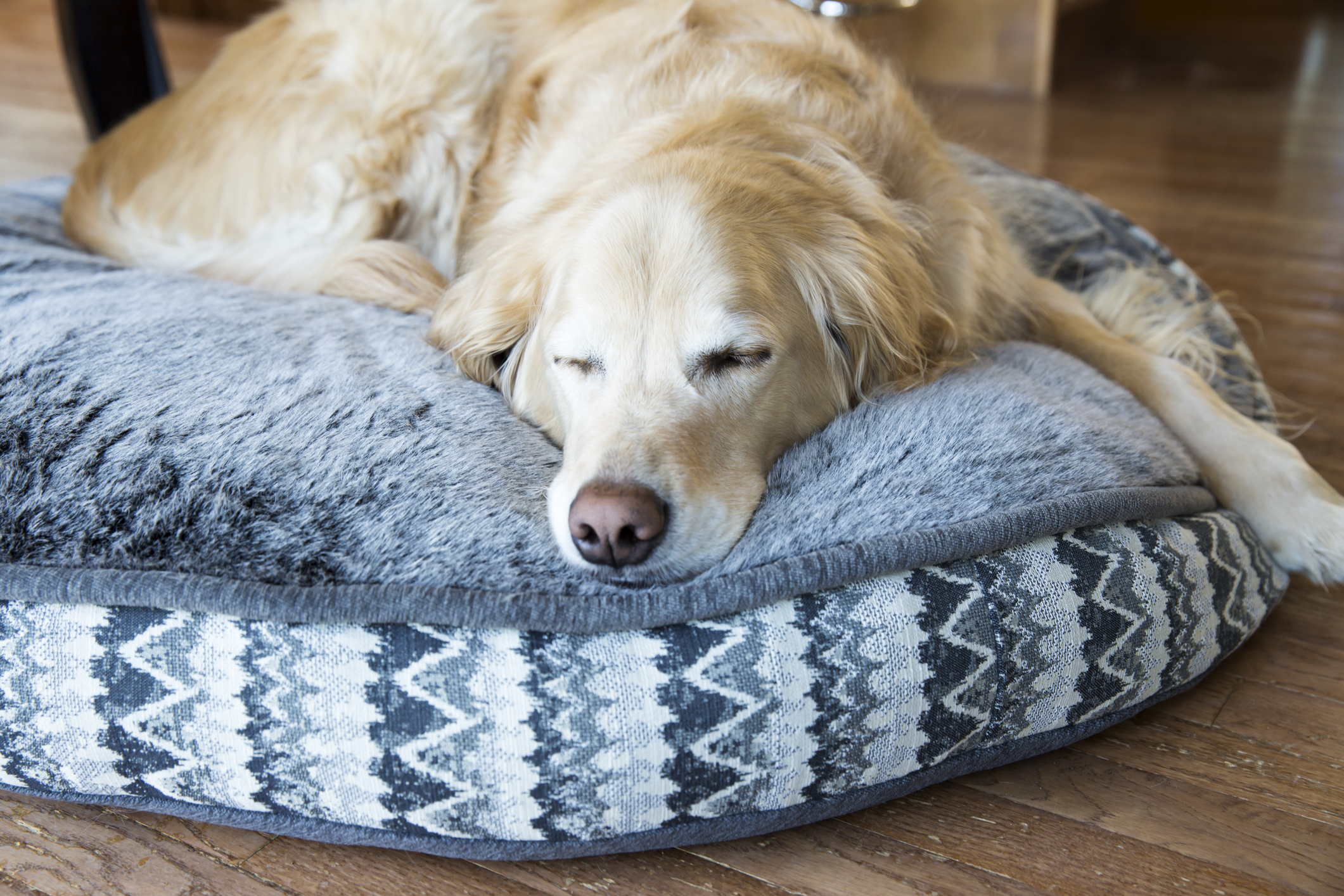
Help Your Pet Deal with Osteoarthritis at Any Age
Just like with humans, we expect our furry friends to slow down a little as they age. One of the most common contributing factors to our pets’ reduced activity in their senior years is osteoarthritis—a degenerative disease of the joints. But what about younger pets who appear to be experiencing mobility issues?
As it turns out, osteoarthritis is not merely an old pets’ disease. It can affect cats and dogs, young and old. Without a keen understanding of this disease and the things that can ease its symptoms, pets may experience mobility pain for far longer than necessary.
What is osteoarthritis?
Osteoarthritis is a chronic form of arthritis that causes pain in your pet’s joints—where two bones connect to facilitate movement. The tissue inside the joint, called the cartilage, degenerates and wears away, eventually causing the bones of the joint to rub together. The damage can lead to joint inflammation, causing stiffness and pain, as well as the formation of bone spurs.
Osteoarthritis is one of many forms of arthritis that can affect pets. While other forms of arthritis, such as rheumatoid arthritis, stem from a disease or the body’s own immune system damaging joint tissue, osteoarthritis occurs naturally due to everyday wear and tear.
Numerous things can worsen osteoarthritis in cats and dogs. Genetics and injuries may be to blame, but daily exercise and impact can also wear down the joints.
Painful joints from osteoarthritis can make it difficult for your pet to move. They might limp, hold themselves in an abnormal posture, have difficulty during exercise, have a difficult time jumping to furniture or stairs or refuse to move much at all.

Debunking the osteoarthritis age myth
One of the biggest misconceptions surrounding osteoarthritis in pets is that only older pets can experience the disease. This may lead to pets living with their pain for much longer periods of time.
While osteoarthritis is certainly common in older pets—largely because of the degenerative nature of the joints—this form of arthritis can affect pets of any age. Pet owners should not dismiss signs of joint pain in their younger dogs or cats.
One of the major risk factors for osteoarthritis in younger pets is excessive weight gain. Obesity puts added pressure on your pet’s joints, causing them to wear down faster. This can result in osteoarthritis pain and mobility issues much sooner in your pet’s life. Unfortunately, this can make managing the disease more difficult. Overweight pets experiencing joint pain are less likely to want to exercise. In turn, this can contribute to even more weight gain by reducing the calories your pet burns.
Sadly, osteoarthritis cannot be cured or reversed. If the disease occurs early in your pet’s life, it could result in many years of difficult or painful movement. This is why it’s so important to slow the degeneration of the joints in your pet’s early life, in addition to monitoring your pet for signs of the disease, and seek treatment as soon as possible.
Osteoarthritis treatment for pets of all ages
Young or old, our furry friends may need a little support to manage the aching and stiffness in their joints. Aside from pain medications or steroids for severe arthritis cases, your pet might find relief with a combination of these treatments:
- Dietary supplements: Joint supplements are very common for dogs but can also be used for cats experiencing joint stiffness and pain. Often formulated with compounds like glucosamine or chondroitin sulfate, which make up cartilage, these supplements may help lubricate the joints, making it easier for your pet to move. Other supplements, such as omega-3 fatty acids, may reduce inflammation.
- Arthritis-appropriate exercise: Exercise is crucial for helping pets maintain mobility and keeping inflammation and stiffness in check. However, the right exercise needs to be encouraged, so your pet does not endure even more pain. Limit high-impact exercises like jumping and running. Instead, encourage your pet to try gentler exercises that support and move the joints without additional stress. Dogs can benefit a lot from swimming or gentle walks, while cats can benefit from slower-paced play throughout the home.
- Weight management: Because obesity may increase your pet’s risk for premature arthritis and contribute to its symptoms, weight management is often a critical part of an arthritic pet’s treatment plan. Work with your vet to determine the appropriate weight-loss diet for your pet, whether that includes calorie restriction or a specialized formula.
Although osteoarthritis cannot be cured, it can be managed over time to give your pet the life they deserve. It’s of the utmost importance that pet parents be mindful of the signs of arthritis—even in young pets—and get them treatment right away to prevent more discomfort and slow joint degeneration as much as possible.


